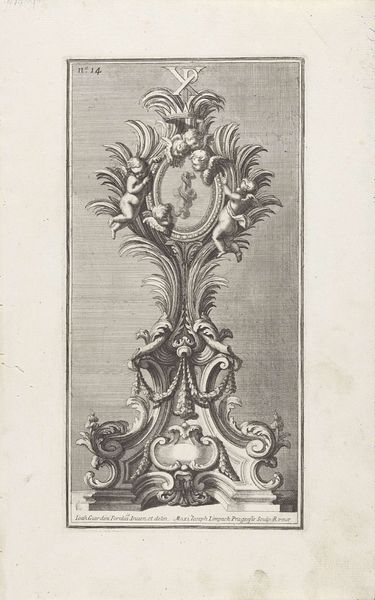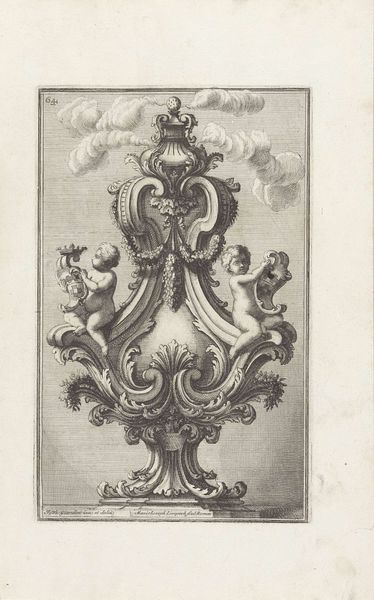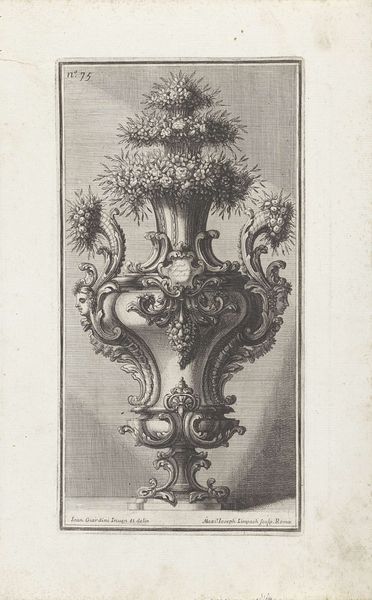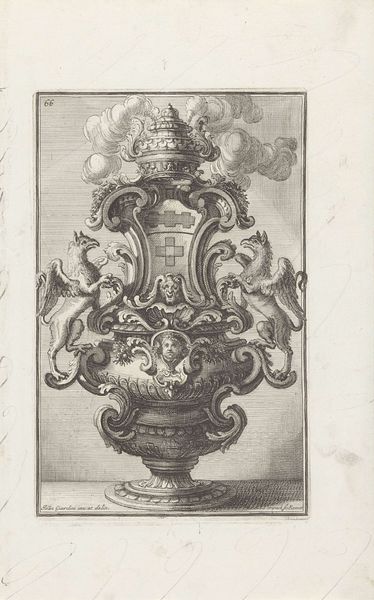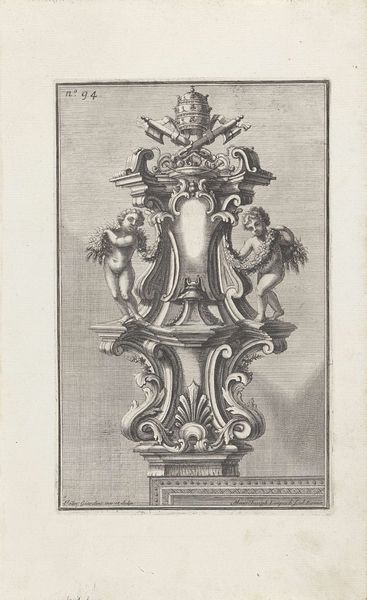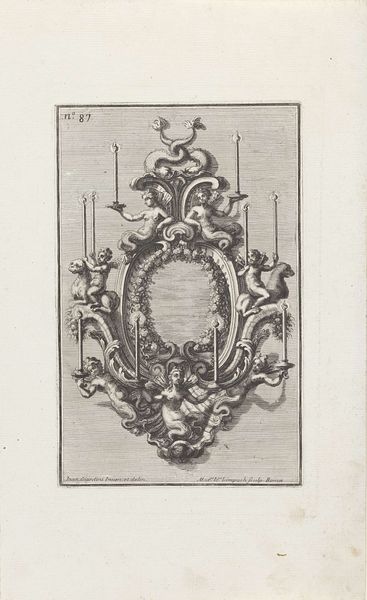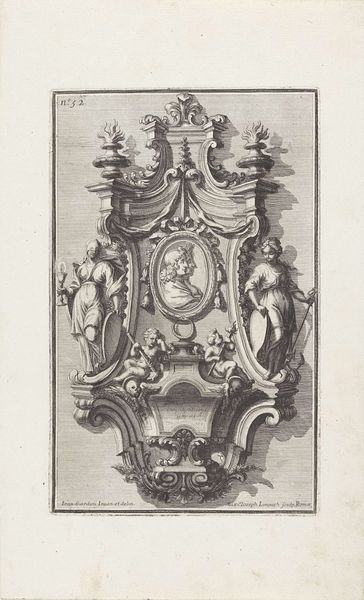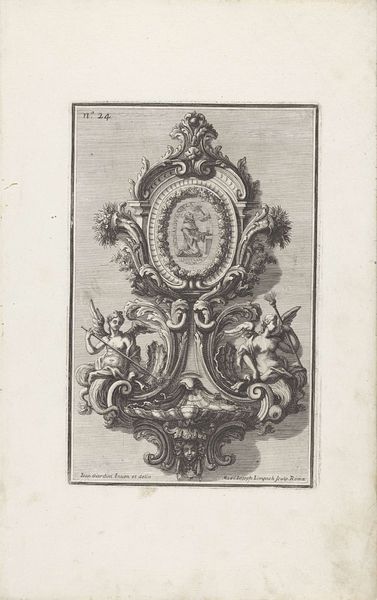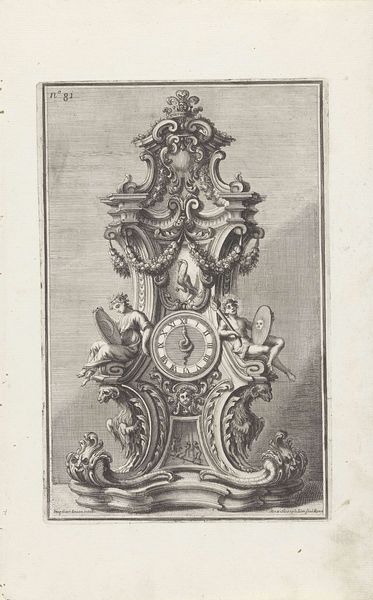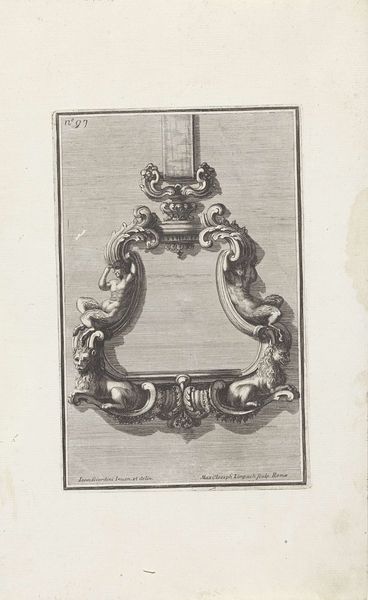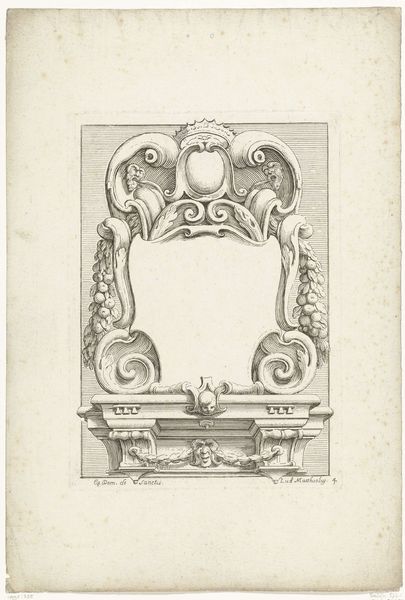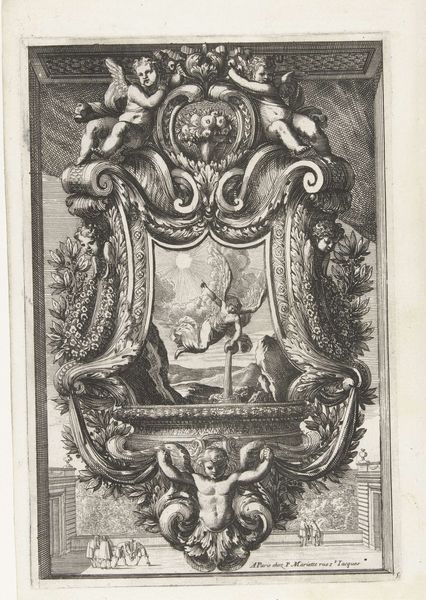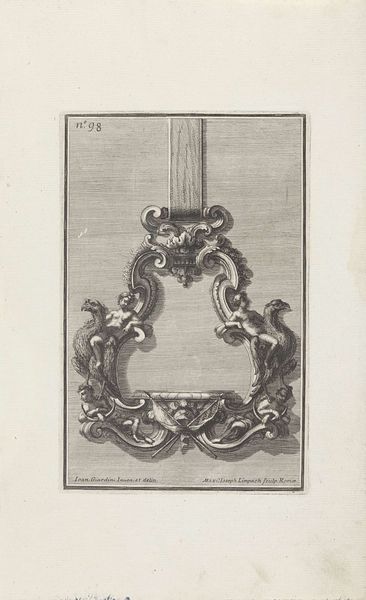
gold, relief, sculpture, engraving
#
baroque
#
gold
#
relief
#
form
#
sculpture
#
engraving
Dimensions: height 297 mm, width 153 mm
Copyright: Rijks Museum: Open Domain
Editor: This intricate artwork, entitled "Reliekhouder met putti en cherubijnen," or "Reliquary with putti and cherubs," was crafted in 1714. Created by Maximilian Joseph Limpach, the piece incorporates gold, relief, sculpture, and engraving elements. The elaborate detail gives it a powerful, almost overwhelming feel. What’s your take on this piece, and what stands out to you from a historical perspective? Curator: What grabs me is how clearly it illustrates the function of art within religious institutions during the Baroque period. The visual vocabulary here—the cherubs, the ornate, almost theatrical design—it’s all meant to inspire awe and reinforce the power and grandeur of the Church. Consider where this object would have been placed, the light it would have caught. The power isn't just aesthetic, it is deeply socio-political. How would an illiterate person react in its presence? Editor: So it’s not just about beauty, but about conveying a message and reinforcing established hierarchies? Curator: Precisely. The Baroque style itself, with its drama and exaggerated ornamentation, becomes a tool. These images served as visual sermons, shaping beliefs and behaviors, particularly in an era where access to religious texts was limited for the masses. Who commissioned this piece, and what were their specific objectives in terms of how it would influence viewers? These questions are just as important as understanding Limpach's technique. Editor: It's amazing how art could function almost like propaganda back then. Now I see that it speaks to a much larger cultural landscape. Curator: And it prompts reflection on the enduring impact of institutions on art production, reception, and meaning across time. What purpose might ornament serve in contemporary religious, political, or other institutional contexts? Editor: This makes me rethink how I view religious art. I’ll definitely look closer at context from now on. Curator: Exactly. Thinking about power dynamics, socio-political functions - that’s where the real richness lies.
Comments
No comments
Be the first to comment and join the conversation on the ultimate creative platform.
